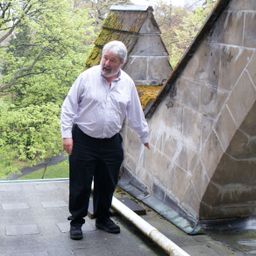Religious Architecture in Canada IV | L’architecture religieuse au Canada IV
Mon statut pour la session
Although the study of architecture in Canada is a relatively young field, it is no exaggeration to say that more attention has been given to religious architecture than any other form of building in the country. That is because as long as people have inhabited the land that is now known as Canada, there have been buildings devoted to their religious beliefs and practices. Churches, synagogues, mosques, and temples can be found in communities across the country in every style, from vernacular to modern. These buildings are expressive, practical, and reflect Canadian pluralism. This session welcomes papers on religious architecture of all types and styles, from all periods of Canada’s history.
________
Quoique l’architecture soit un domaine relativement nouveau au Canada, il n’est pas exagéré de dire que l’architecture religieuse reçoit plus d’attention que tous les autres genres de construction dans le pays. Depuis le peuplement de terres identifiées comme le Canada, il y eut des bâtiments dévoués aux croyances et aux pratiques religieuses. Les églises, les synagogues, les mosquées et les temples sont présents dans les communautés à travers le pays, et ce dans tous les styles, du vernaculaire au moderne. Ces édifices expressifs et pratiques reflètent le pluralisme canadien. Cette séance vise à explorer des soumissions à propos de l’architecture religieuse, de tous les types et styles et de toutes les époques de l’histoire du Canada.
Sous sessions
St John’s Anglican Church in Jordan, Ontario was constructed in 1841 but there is no documentation about the architect or builder of the church. This paper attributes the design to the Toronto-based architect John George Howard (1803-1890) on the basis of remarkably close similarities with documented churches by Howard. Specifically, the very distinctive gallery piers at Jordan, with four clustered columns with moulded shaft rings correspond very closely with those in a Howard sketch for a...
Whenever dominant and subordinate cultures come into contact, the architecture built as the setting for their encounters reveals much about the dynamic between them. Often, a rich and complex architectural hybridity occurs, such as Anglo-Norman architecture in England, or Mudéjar architecture in Spain. Another example of an encounter between a dominant and subordinate culture was the English presence in Labrador in the second half of the nineteenth century. The Church of ...
John Medley, Bishop of Fredericton, 1845-1892, is well known as a champion of the ecclesiological Gothic Revival for Anglican churches in New Brunswick. His passion for designs for which ‘authority’ was established in English Medieval Gothic sources extended to the fittings of churches including open seats, stained glass, floor tiles and fonts. It is the latter that is the focus of this paper. For his cathedral at Fredericton the font was imported from Exeter where Medley had been vicar of...


